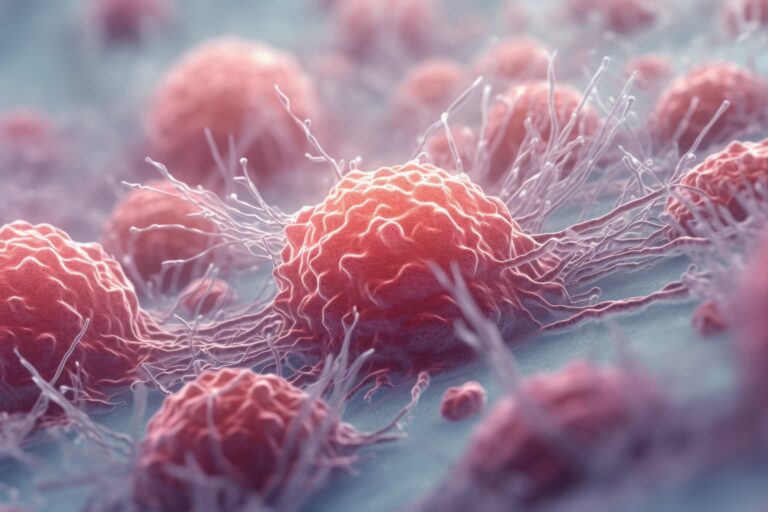After more than a year of backorder status, EpiCentre Technologies has decided to discontinue all Tobacco Acid Pyrophosphatase (TAP) products and kits containing them. Normally a company discontinuing a product is not major news, but TAP is an important enzyme for RNA biology work and EpiCentre was the only company making it in the world.
TAP has a fairly unique activity in that it can remove the 5′ Guanosine cap from mRNAs leaving a 5′ monophosphate. In protocols like 5′ RACE, this allows researchers to then use RNA ligase to attach an oligonucleotide to the 5′ end of decapped mRNAs for transcriptional start site determination.

Apparently, making a recombinant enzyme is not possible and one must purify it from tobacco plants via a difficult process… too difficult.
So what are the alternatives available?
RNA 5′ polyphosphatase as an alternative to TAP?
RNA 5′ polyphosphatase at first glance looks like a reasonable candidate to be a TAP replacement, however this enzyme removes gamma and beta phosphates from a 5′ triphosphorylated RNA, such as a primary transcript.
This enzyme has zero activity on the m7 GTP cap of an mRNA. Similarly bacterial RppH removes the 5′ triphosphate/pyrophosphate from bacterial transcripts (see Deana et al. 2008: doi:10.1038/nature06475).
But what about DCP2, the primary eukaryotic enzyme implicated in mRNA decapping?
According to published reports, DCP2 catalyzes the conversion of m7 GTP caps to m7 GDP and 5′ monophosphorylated mRNA (see van Dijk et al. 2002 doi:10.1093/emboj/cdf678). But isn’t that what TAP does?
Indeed researchers have used TAP and DCP2 interchangeably to render mRNAs sensitive to 5′ monophosphate-dependent exonuclease, for example (see Otsuka et al. 2009 doi:10.1128/MCB.01325-08).
A quick look suggests that no company is currently offering active DCP2. Recombinant Human DCP2 is available as an off-the-shelf protein shipped on dry ice, but biological activity has not been assessed. Also a variety of tools exist that would allow facilitated expression of DCP2 such as yeast DCP2 expression Adenoviruses and Gateway constructs for human DCP2. It remains to be determined if DCP2 is the answer to the world’s TAP needs. Yeast DCP2, for example, requires other P-body proteins for maximal activity (see Wang et al 2013 doi:10.1128/MCB.01583-12). These co-factors include DCP1, Edc1-3, Lsm1-7, Dhh1 and Pat1.
The surprising part is that DCP2 hypomorph mice have no apparent phenotype, probably because there are multiple decapping proteins in mammalian cells, including Nudt16 (see Song et al. 2010 doi: 10.1016/j.molcel.2010.10.010).
Another enzyme that has some potential is human NUDT16. Like DCP2, this protein is a member of the Nudix family of proteins and is able to remove caps from both mRNAs and snoRNAs (see Lu et al 2011 doi: 10.1007/s13238-011-1009-2). According to a recent report (Song et al. 2013 doi:10.1261/rna.037309.11), multiple Nudix family members have decapping activity, however NUDT16, NUDT12, and NUDT15 most potently convert m7GTP capped mRNAs to the m7GMP form. As with the case of DCP2, recombinant human proteins are commercially-available, but the enzymatic activity has not been determined and Nudix ORF expression constructs will facilitate recombinant protein production.
So just what enzyme RNA biologists will turn to now that TAP is unavailable remains to be determined. It will be interesting to watch this development.
My selection of reagents for RNA studies

You will find below my selection of the most popular catalog mRNAs, chemically synthesized mRNAs with any modication and long mRNAs is available.
5′-capped and poly(A) tailed mRNAs:
EGFP mRNA, Fluc mRNA, beta-Gal mRNA, and Ovalbumin mRNA
80+ 5′ methylcytidine, and pseudouridine-containing mRNAs
80+ methylcytidine and pseudouridine-containing mRNAs encoding for EGFP, mCherry, Factor IX, Cas9 and Cas9 Nickase…
Another alternative is to design custom oligos (with appropriate modifications and dyes) for optimal experimental designs. Online forms can now assist you when submitting your requests for custom oligo production.
What about you?
What are your favorite RNA research reagents? Leave your comments here!




15 responses
I came across this article after trying to find more about the reason Epicentre discontinued TAP. Im curious about the part of your article that mentions the difficulty/impossibility of making a recombinant protein out of TAP, would you mind referring me to a source for that?
Thanks!
Hi Melvin,
I also found this inability to make recombinant TAP to be an interesting twist to the story. When TAP had a “backorder” status our contacts at Epicentre indicated to us that: “The delay on TAP is that it is a native protein, it is not cloned, and we have to grow a lot of tobacco callus tissue to isolate and purify enough of the TAP for production purposes.“. Now in the formal discontinuation announcement they state: “Unfortunately significant development and troubleshooting efforts in Manufacturing and R&D have failed to resolve the issues with producing this enzyme. In addition, we do not have a clear path to successfully restoring supply.”
I’m not certain that one could prove that it is impossible to make recombinant functional TAP and just because others have failed does not mean it is impossible: “The absence of evidence is not the evidence of absence“.
I’ve talked to some of the bigger molecular biology companies, and they were all purchasing TAP from Epicentre and reselling it. A friend at one company told me they have tobacco plants in their greenhouse now.
I’m working on some collaborations now to test some replacement enzymes…it’s definitely fun.
I was wondering what the sequence for TAP is (DNA or amino acid)? I cannot find it in querying various genome databases. I am guessing that either it is not sequenced, not annotated, or TAP is not the official name. Do you know what the actual gene name or symbol for TAP is? Or better yet, where on can find sequence information?
Thanks!
Hi Rob,
It seems that TAP was always just a biochemical preparation from Nicotina tabacum, and nobody knew the amino acid sequence or DNA sequence: http://pubs.acs.org/doi/abs/10.1021/bi00655a024. According to the NEB patent on Rpph, which people tell me is as effective as RNA 5′ polyphosphatase as a decapping enzyme, TAP has not been cloned: https://www.google.com/patents/US8486666
Recently, the tobacco genome has been described http://www.ncbi.nlm.nih.gov/pubmed/24807620, so someone might be able to go find the gene for TAP based on homology with other decapping enzymes. This cDNA repository claims to have the clone, but a BLAST reveals the sequence they are selling is actually human pyrophosphatase: https://mrcppureagents.dundee.ac.uk/reagents-view-cdna-clones/593719. These repositories are a bit scary sometimes. You can find some Nicotina genus genes with homology to decapping enzymes in NCBI: http://www.ncbi.nlm.nih.gov/nuccore/698494527?report=fasta so maybe this is a good place to start.
I basically encountered the same information as Mark. I contacted Epibio and they said that recombinant expression was next to impossible. Moreover, I was surprised to find the cDNA in that same repository you posted and came to the same conclusion — that it wasn’t TAP but the human homologue.
I just obtained RppH from NEB and will be testing soon. Does anyone know what is its specific activiy compared to TAP?
Cheers!
Melvin
Hi,
We used Epicenter’s tap to decapping mRNA for the Pro-seq assay. Since Epicenter discontinued this enzyme, I actually purchased the so called cDNA clone of TAP from University of Dundee. It is human not from Nicotiana tubacum. this clone cloned into the pET-15b vector and expresses well upon IPTG induction. The resulting protein has actually tagged and has His6-3C- tags at its N-terminus. I tested the activity of this protein with the pNPP posphatase assay at pH 6.0 in a buffer similar to the Epicenter TAP assay buffer. I used Epicenter’s TAP as a positive control. Sadly, my purified protein has no activity compared to Epicenter’s TAP.
So now I have ordered the Tobacco BY-2 cells to purify authentic TAP according to the Japanese group who originally purified it in 1976.
There’s a thread on researchgate where Sven Heinz indicates that the NEB patent says the activity is 1/100 that of TAP: https://www.researchgate.net/post/Does_anyone_know_of_an_affordable_alternative_for_Tobacco_acid_pyrophosphatase_in_GRO-seq_applications
I’ve talked to some users who tried Rpph and it just didn’t work for them as a TAP replacement, so they are making thier own enzymes and testing them. We’re working with some top “decapping expert” collaborators to try to find a good alternative and will be sending some out for beta-testers relatively soon.
Well I am doing In Vitro capping with Vaccinia on low amounts of synthesized RNA so even if it not good enough to decap total genomic mRNA perhaps it will be useful for my studies. Im curious, how does one become a beta-tester for your own enzymes?
Thanks for the reply!
Hi Melvin,
I will contact you by email.
Best,
Mark
Hi Mark, I am wondering are there any updates on the TAP replacement enzymes? We are now in big demand of such kind of replacement enzymes for Gro-seq? Thank you so much!
Hi Zeb,
tebu-bio will be releasing a replacement enzyme very soon. We developed this in collaboration with some of the world’s top experts in decapping. Send me an email: mark.livingstone@tebu-bio.com if you want to be alerted when the product is released.
We have an updated post on this story including information about our new enzyme: http://5.196.212.231/2015/05/12/tebu-bio-collaborates-with-experts-to-find-a-replacement-for-tap/
tebu-bio’s Decapping Pyrophosphohydrolase Enzyme is packaged and ready to be sold, but not tested for all applications yet. Researchers wishing to purchase the enzyme prior to complete use validation should contact me for a quote. Researchers in the U.S. are encouraged to purchase on the tebu-bio website using a credit card in euro. If they register on our website they will have to wait one business day for their account to be activated:
http://www.tebu-bio.com/Product/003436004-35UL/Decapping_Pyrophosphohydrolase.html
The latest/final update on the TAP replacement saga: http://5.196.212.231/2015/09/03/two-new-enzymes-available-to-replace-tap/